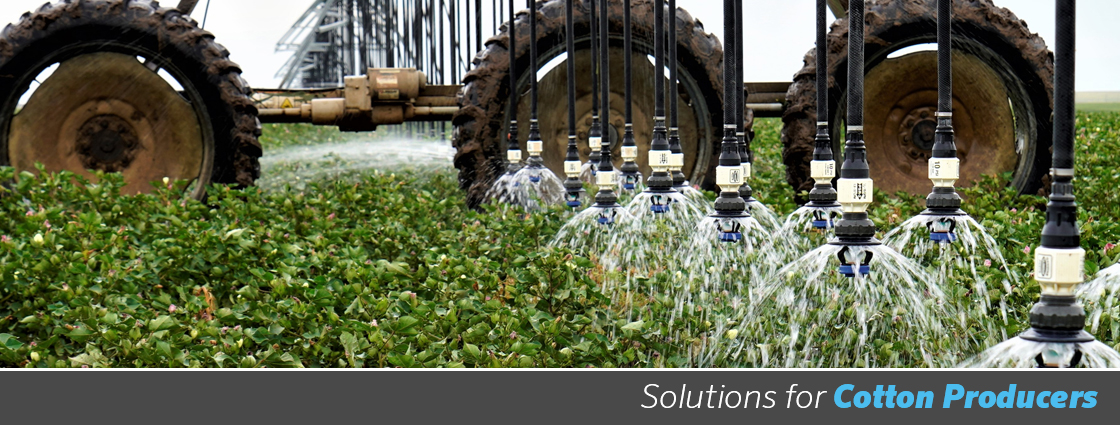
Efficient irrigation is essential for maximizing cotton yield and fiber quality. The difference between irrigated and non-irrigated cotton can be dramatic, with some studies showing that proper watering can increase yields by 200% to 300%.
At Hunter® Agricultural Irrigation, we understand the complexities of cotton irrigation requirements. Our Senninger® sprinklers help optimize water application across cotton irrigation systems, ensuring efficient water use while mitigating the challenges of soil infiltration and adverse climatic conditions. By integrating our innovative sprinklers into center pivot irrigation, cotton farmers can achieve higher yields, improved soil moisture retention, and reduced water waste.
What is the Best Irrigation System for Cotton?
Among the various cotton irrigation methods, center pivot systems equipped with Senninger® sprinklers offer one of the most efficient and cost-effective solutions. These sprinklers provide uniform water application at low pressures, helping farmers irrigate cotton effectively while minimizing runoff and evaporation losses.

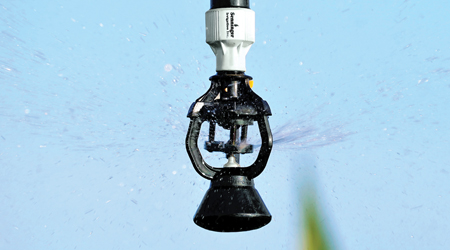
i-Wob®2
The i-Wob®2 stands out as the most uniform water distribution pivot applicator available today—an essential feature for cotton irrigation systems. Its protective shroud shields the sprinkler’s wear surface from grit, UV exposure, and adjacent sprinkler splash, ensuring longevity and consistent performance. By delivering water evenly, the i-Wob®2 helps optimize soil moisture across cotton fields, preventing overwatering and underwatering.
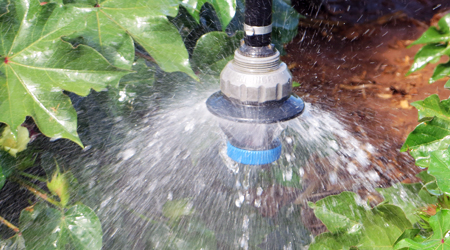
LDN® LEPA
The LDN® LEPA (Low Energy Precision Application) bubblers are designed to ensure that 95% to 98% of pumped water reaches the cotton plant’s root zone. Installed at 8 to 18 inches (20 to 46 cm) above the ground, these sprinklers effectively reduce wind drift and evaporation loss, a critical factor in cotton irrigation management. For farmers focused on efficiently irrigating cotton, the LDN® LEPA system provides direct water delivery to the roots, ensuring every drop counts.
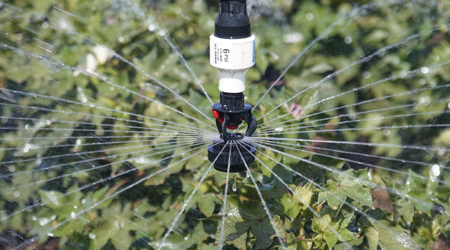
LDN® Spray
The LDN® (Low Drift Nozzle) offers cotton growers flexibility in cotton irrigation methods, allowing them to control the sprinkler’s distribution pattern and trajectory. Its streamlined body is designed to handle the challenges of traveling through tall cotton plants while maintaining even water distribution across the field. Whether used for center pivot irrigation or other cotton irrigation systems, the LDN® ensures precise water delivery, promoting uniform plant growth and higher fiber yields.
How Often Should Cotton Be Watered?
Watering frequency depends on soil type, climate, and growth stage. However, a key cotton irrigation requirement is maintaining consistent soil moisture during germination, early vegetative growth, and boll development. Using Hunter® Agricultural Irrigation sprinklers, farmers can fine-tune their irrigation schedules to meet these needs, preventing water stress while conserving resources.
Control Your Pressure
Every system experiences pressure fluctuations, resulting in unwanted flow deviations and over and under-watering. Regulators maintain a constant preset outlet pressure with varying inlet pressures, which alleviates pressure differences that can cause an applicator’s area of coverage to change.
Senninger® black and white pressure regulators are renowned for their accuracy, durability, and ability to maintain the overall efficiency of an irrigation system.
Learn More


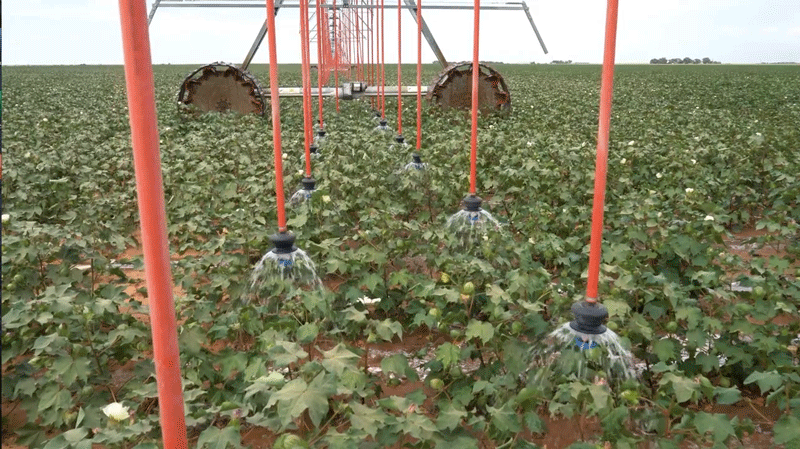
“I go around the country and I see these broadcast spray systems and I can’t, for the life of me, understand why we’ve been so slow to change back to LEPA. A LEPA system is 80% efficient, which means, if you put on an inch of water, you’re going to get eight-tenths of good out of it. If you put it in a broadcast spray, you’re spreading water over 60 inches instead of 30 inches on 30-inch rows or spreading it over 80 inches rather than 40 inches on 40-inch rows. It’s not going to penetrate into the soil as equally and it’s going to have more water exposed to heat and wind, and your efficiency is going to be around 50 percent. So, you’re losing a third on an inch for every inch you are putting on.” - Bob Glodt


